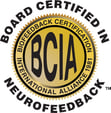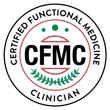SCIATICA: CHALLENGES AND TREATMENT
If your sciatic nerve becomes inflamed, the condition is called sciatica (pronounced si-ad-i-ka). The pain can be intense! It often follows the path of your nerve down the back of your legs and thighs, ankle, foot and toes, but it can also radiate to your back. Along with burning, sharp pains, you may also feel nerve sensations such as pins-and-needles, tingling, prickling, crawling sensations, or tenderness. Ironically, your leg may also feel numb.
To complicate matters, although sciatica pain is usually in the back of the legs or thighs, in some people it can be in the front or the side of the legs, or even in the hips. For some, the pain is in both legs – bilateral sciatica!
The quality of pain may vary. There may be constant throbbing, but then it may let up for hours or even days. It may ache or be knife-like. Sometimes postural changes, like lying down or changing positions, affect the pain, and sometimes they don’t. In severe cases, sciatica can cause a loss of reflexes or even a wasting of your calf muscles.
For sciatica sufferers, a good night’s sleep may be a thing of the past. Simple things like walking, sitting, or standing up can be difficult or impossible.
We take a different approach to the treatment and prevention of sciatica. After a thorough neurological examination by Dr. Karl R.O.S. Johnson, DC, we determine which part of the nervous system is not functioning properly. In many sciatica patients we may find a high mesencephalic output.
There are three parts to the brain stem: top, middle, and lower. The mesencephalon is the top part of the brain stem. A high output of the mesencephalon will cause an increased pulse and heart rate, inability to sleep or waking up from fitful sleep, urinary tract infection, increase warmth or sweating, and sensitivity to light.
Along with a high mesenphalic output, the sciatica patient may have a decreased output of the cerebellum. The cerebellum is in the back part of the brain, and it controls all of the involuntary spinal musculature.
No matter what the condition, it is imperative that a thorough funcitonal neurological examination is performaed as part of a thorough and comprehensive exam to determine the exact nature of the patient’s condition.
The right brain controls the left side of the body, and the left brain controls the right side. If the patient is experiencing pain on one side of the body, the opposite brain may be firing at an abnormally high rate. In order for a patient to perceive pain, an area of the brain must fire at a higher frequency of firing. If the pain is bilateral or on both sides, there may be different central structures involved such as the brain stem or cerebellum. It is my job to determine which aspect of the central nervous system is not working properly.
For more information or to see if you might be a candidate for these breakthrough treatment programs give us a call at 586-731-8840 to schedule an appointment for a free consultation.












